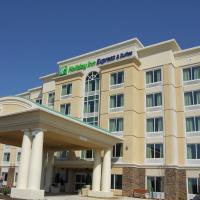[ad_1]
HENDERSONVILLE, TENNESSEE – The U.S. hotel industry reported positive results in the three key performance metrics during April 2019, according to data from STR.
In a year-over-year comparison with April 2018, the industry posted the following:
- Occupancy: +0.3 at 68.0%
- Average daily rate (ADR): +0.9% to US$131.85
- Revenue per available room (RevPAR): +1.2% to US$89.67
“Considering that the Easter calendar shift pulled group occupancy down 6.3%, any increase in nationwide RevPAR would have been considered respectable – so it’s fair to say that the 1.2% increase was a pleasant surprise,” said Jan Freitag, STR’s senior VP of lodging insights. “All told, April was very aligned with recent trends. The industry set another monthly demand record but saw a lack of meaningful growth in room rates. The 12-month moving average for ADR growth now stands at 1.9%, the first time since early 2011 that this measure has shown sub-2% growth.”
The industry has now posted year-over-year RevPAR growth for 109 of the past 110 months. The longest overall expansion cycle in industry history lasted 112 months from December 1991 through March 2001.
Among the Top 25 Markets, Minneapolis/St. Paul, Minnesota-Wisconsin, registered the largest jump in RevPAR (+17.1% to US$91.67), driven by the largest increase in ADR (+15.1% to US$134.86).
Los Angeles/Long Beach, California, experienced the highest rise in occupancy (+3.2% to 81.8%).
Norfolk/Virginia Beach, Virginia, reported the only other double-digit increases in ADR (+10.4% to US$104.29) and RevPAR (+12.8% to US$71.85).
New Orleans, Louisiana, posted the largest decrease in RevPAR (-9.0% to US$126.03), due primarily to the steepest drop in ADR (-6.7% to US$163.77).
Detroit, Michigan, saw the largest decrease in occupancy (-6.1% to 64.5%).
“While we’re forecasting positive performance for the year, we’re keeping an eye on the development pipeline and increased construction activity,” Freitag said. “Supply growth has already impacted performance in many major markets, especially in the limited- and select-service segments, and we do not expect this trend to change. Add that to sometimes steep increases in labor cost, and hoteliers are feeling a lot of pressure on their bottom line.”
[ad_2]You can read more of the news on source
 Travelsmart
Travelsmart



